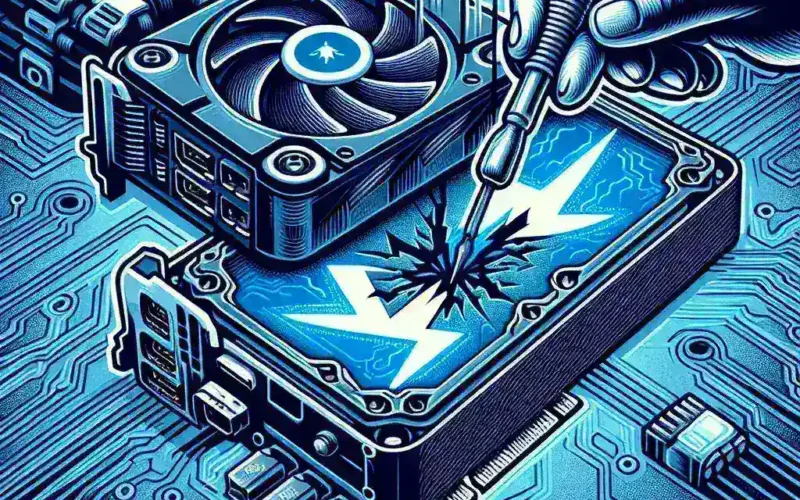Undervolting a GPU can be a highly effective way to reduce its thermal output and power consumption. This process involves lowering the voltage that the GPU receives without sacrificing performance. By doing so, you can enjoy cooler temperatures, quieter operations, and potentially extend the lifespan of your hardware. In this guide, we will take you through the step-by-step process of undervolting your GPU safely and effectively.
Why Undervolt a GPU?
There are several significant benefits to undervolting a GPU:
- Reduced Temperatures: Lowering the voltage reduces the heat output of the GPU, leading to cooler operating temperatures.
- Power Efficiency: By reducing the voltage, the GPU consumes less power, which can be particularly beneficial for laptops and energy-conscious users.
- Extended Lifespan: Lower temperatures and reduced power stress can increase the longevity of the GPU.
- Quieter Operation: Cooler GPUs often require less fan speed, resulting in a quieter system.
Prerequisites
Before starting the undervolting process, make sure you have the following:
- A Compatible GPU: Most modern GPUs support undervolting, but it’s important to check if your specific model does.
- Monitoring Software: You need software to monitor your GPU’s temperatures, voltages, and clock speeds. Popular options include MSI Afterburner, HWMonitor, and GPU-Z.
- Benchmark Tools: Use benchmarking tools like 3DMark, Unigine Heaven, or FurMark to test stability and performance after undervolting.
Step-by-Step Guide to Undervolting a GPU
Step 1: Install and Open MSI Afterburner
The first step is to download and install MSI Afterburner. This software allows you to tweak various GPU settings, including core voltage, core clock, memory clock, and fan speeds.
Step 2: Open the Voltage-Frequency Curve Editor
In MSI Afterburner, click on the graph icon to open the Voltage-Frequency Curve Editor. This tool helps you to adjust the voltage curve of your GPU.
Step 3: Find the Stable Voltage Point
By default, the voltage curve shows different voltage points at various clock speeds. Select a point on the curve where you want to start reducing the voltage. A good starting point is around 900mV.
Step 4: Lower the Voltage
Drag the selected point down to reduce the voltage. Keep in mind that each GPU is different, so you may need to experiment to find the lowest stable voltage. Apply the new settings.
Step 5: Test Stability
Run a benchmarking tool to test the stability of your new settings. If the system crashes or displays artifacts, you may need to slightly increase the voltage until you find a stable configuration.
Step 6: Monitor Temperatures and Performance
Using monitoring software, keep an eye on your GPU’s temperature, clock speeds, and performance. Ensure that the GPU is operating within safe temperature ranges and that performance has not significantly decreased.
Performance and Temperature Comparison
Here is a tabular comparison to illustrate the potential impact of undervolting:
| Parameter | Before Undervolting | After Undervolting |
|---|---|---|
| Voltage | 1100mV | 900mV |
| Temperature | 85°C | 70°C |
| Power Consumption | 200W | 170W |
| Performance (3DMark Score) | 6500 | 6450 |
Best Practices and Tips
- Backup Your Settings: Always save your original voltage and clock settings before making any changes. This allows you to revert the changes if needed.
- Gradual Changes: Make small adjustments and test stability after each change. Large voltage drops can make the system unstable.
- Monitor Continuously: Keep an eye on the GPU’s temperature and performance, especially during the first few days after undervolting.
- Custom Fan Curve: Adjust your fan curve in MSI Afterburner to ensure adequate cooling.
Conclusion
Undervolting a GPU is a straightforward yet powerful way to enhance your system’s performance and efficiency. By following the steps outlined in this guide, you can achieve cooler temperatures, lower power consumption, and a quieter gaming or work environment. Remember to proceed with caution, monitor continually, and enjoy the benefits that come with a well-undervolted GPU.

